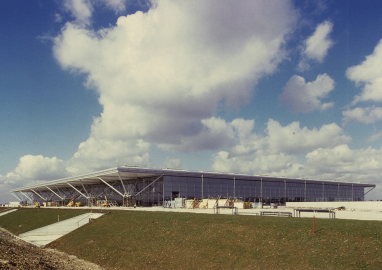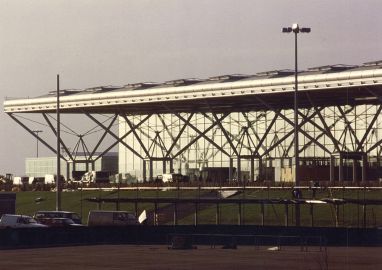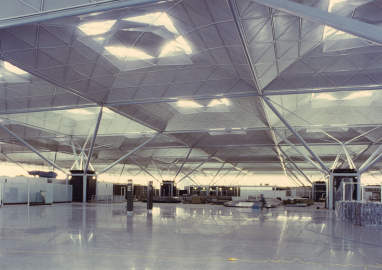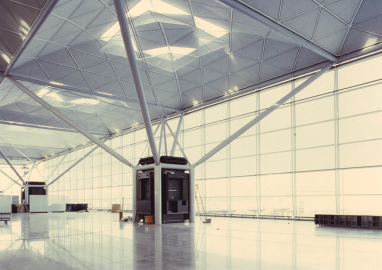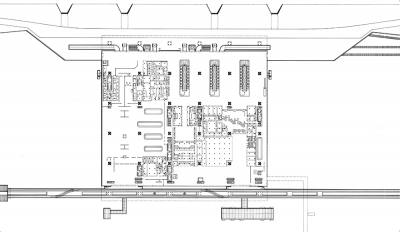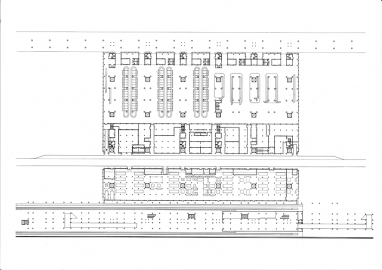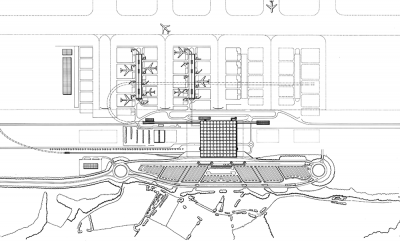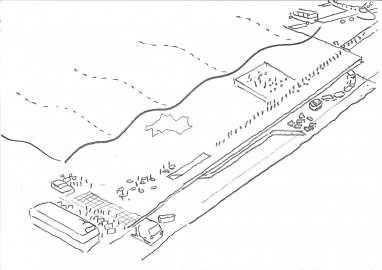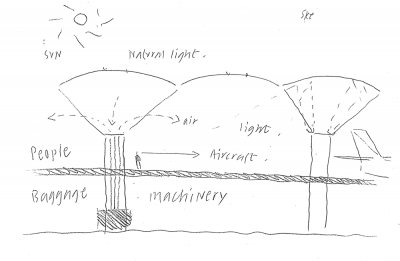Stansted Airport
The Stansted Airport Terminal building responds to a clear, determined decision to tackle infrastructural questions. The result is an enormous interchange centre, a functional mechanism of transfer designed to systematise different and differentiated transport networks that converge at the same point. The programme thus responds to an effectively conceptual scheme: a large rectangular ground plan virtually divided into two longitudinal strips (a landing or reception area, a runway or embarkation area) and two transversal strips, perpendicular to the others (arrivals, departures) that are superimposed on each level in order to articulate the different functional sectors of the new building, which consists of two basic strata. While the basement is conceived as a large machine room, a station fed by trains in the area corresponding to the landside sector, and by service infrastructures in the airside sector, the access floor is an immense foyer where all the functional activities are grouped together on a single level beneath the same metallic roof. Arrivals and departures thus take place directly, in two parallel strips, passing through the normal succession of formalities arranged in a strictly linear form.
While the lower level is structured on the basis of a conventional grid of concrete pillars, the floor above is conceived as a single, great open interaction area, a flexible surface obtained by means of a grid of structural columns, or tree trunks, at 36-m centres. 4 metres from the ground, these large pillars send out branches at an angle of 45 degrees in order to reduce the dimensions of the network to 18-m squares. Thus there are 121 gridded vaults supported by 36 tree-like structures placed in six rows of 6 which stand on the floor below and reach 21 m in height. All the piping and wiring are placed inside these pieces, thereby offering the possibility of modifying the compartmentalisation of the large open area by means of light prefabricated elements.

